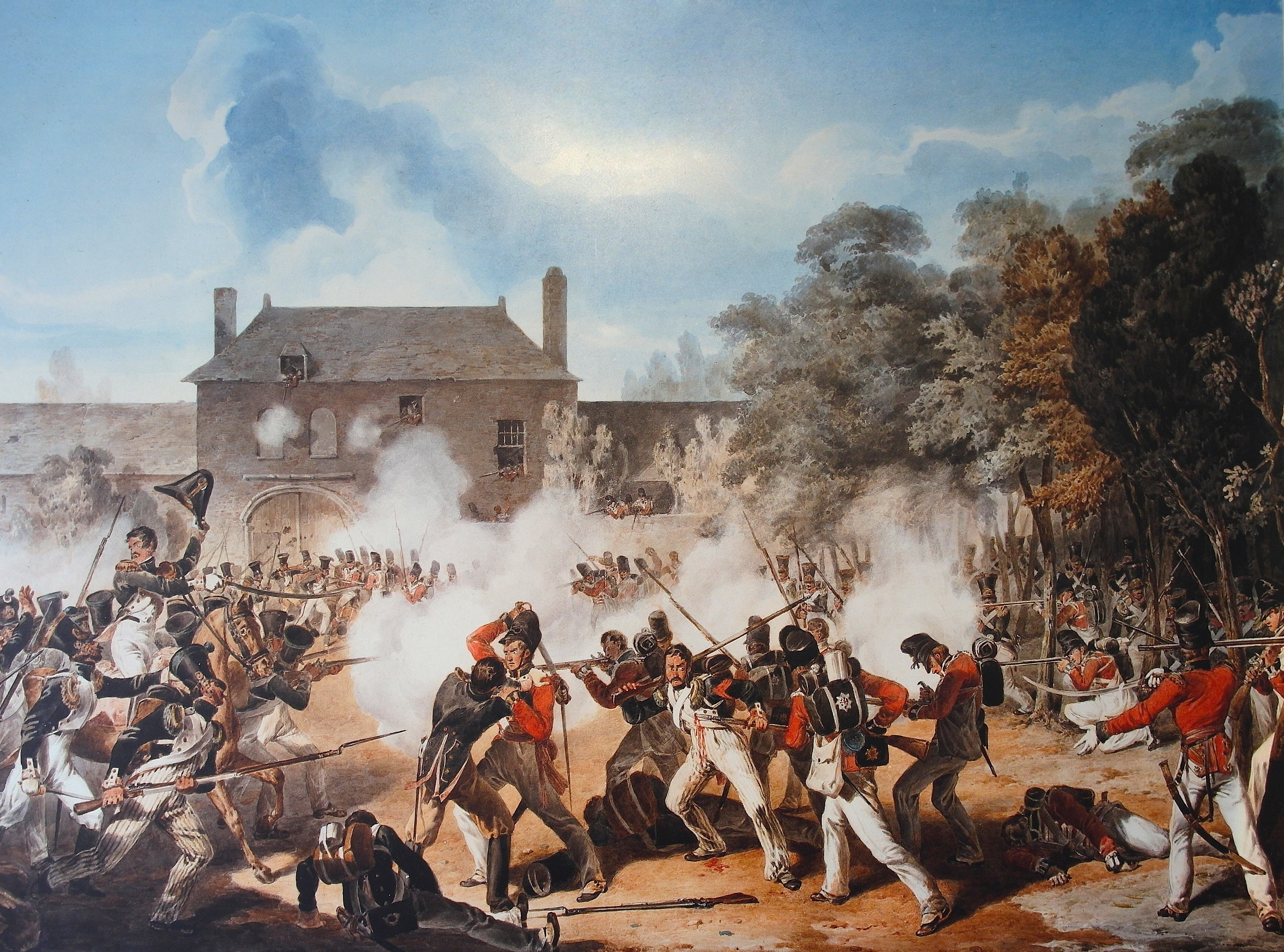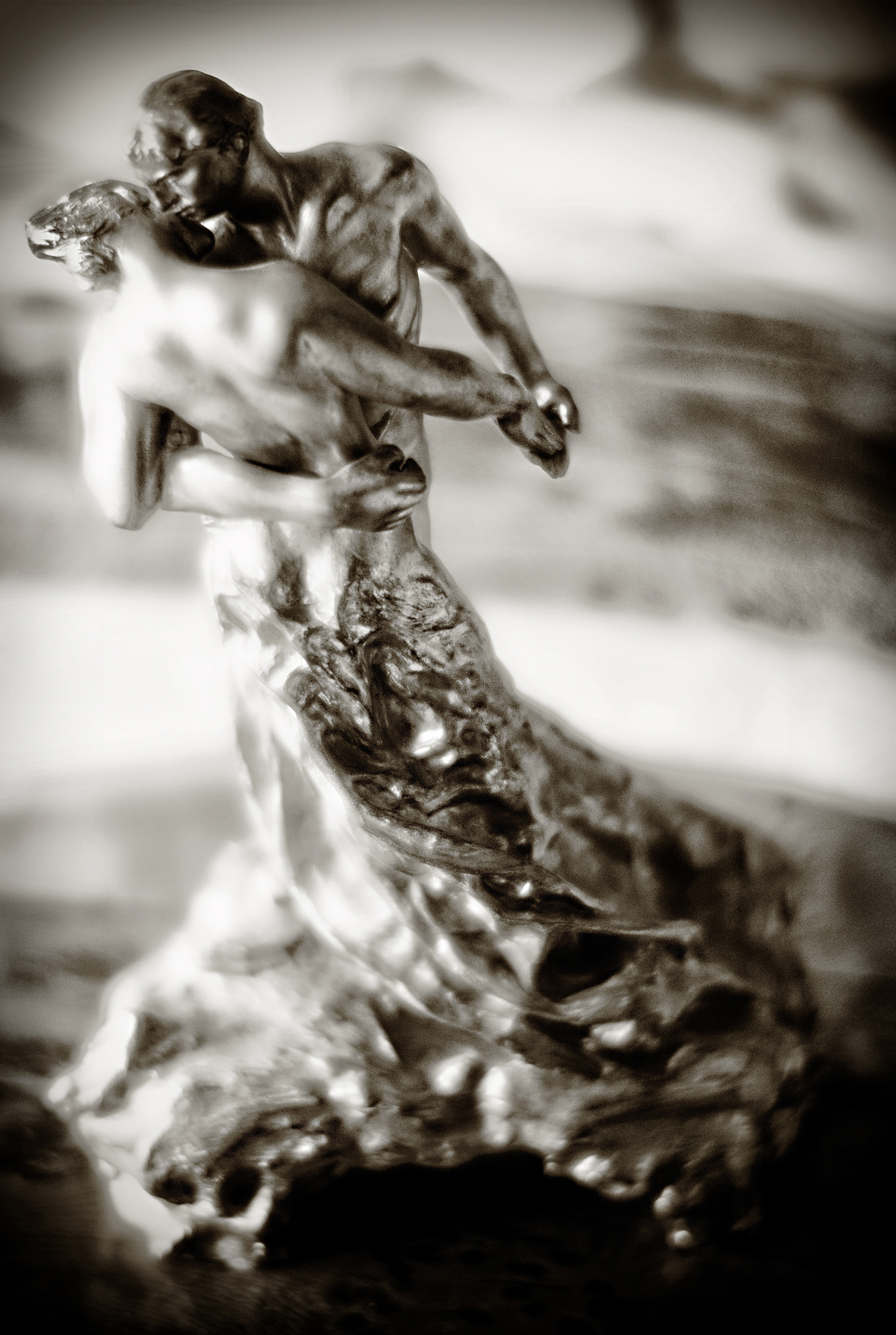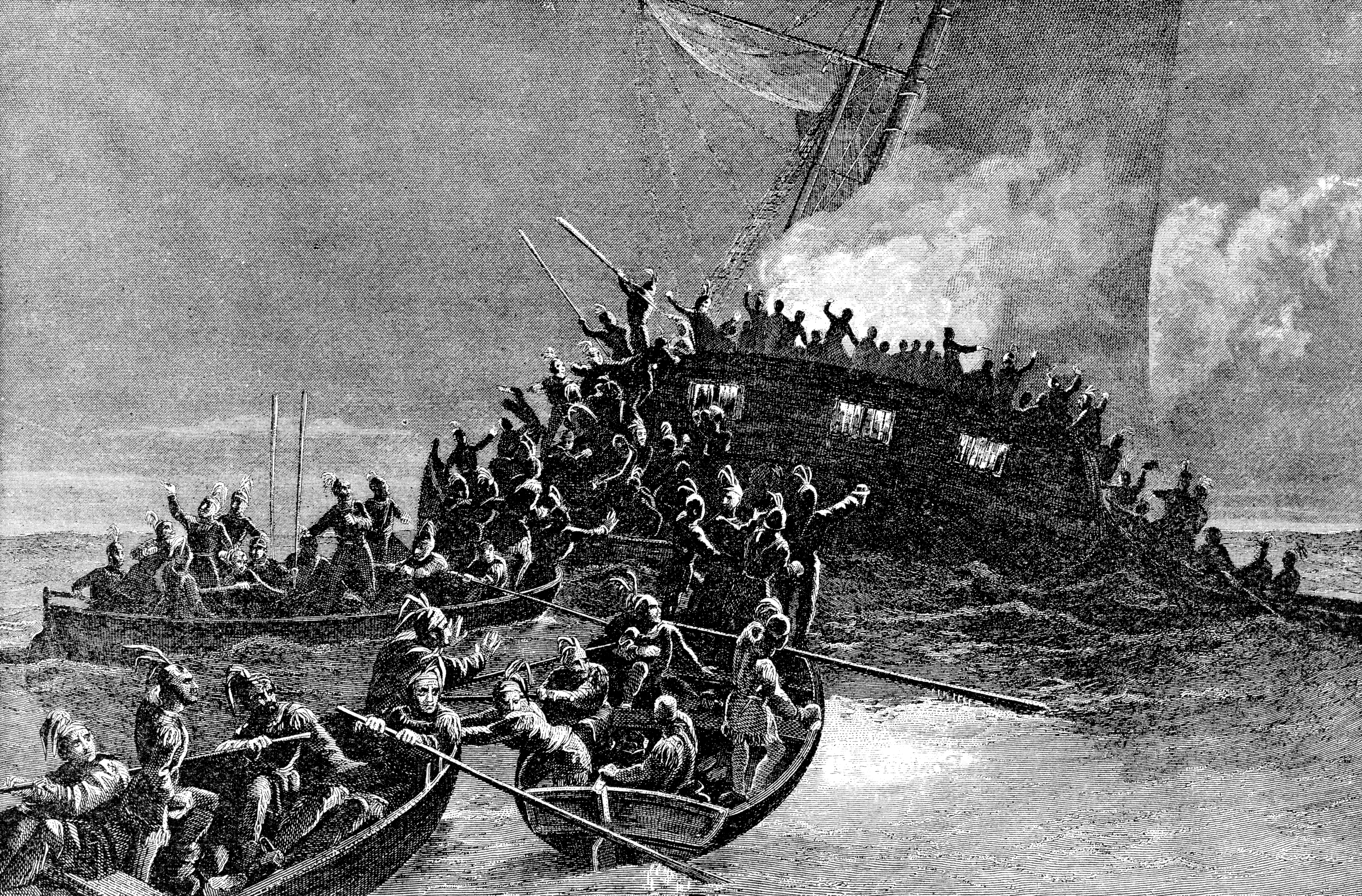|
Samuel Potter (drum Major)
Samuel L. Potter (1772–1838) was a British drum major in the Band of the Coldstream Guards and an influential fife and drum manual author. Biography Potter was born in 1772 and in 1786, at the age of 14, he enlisted in the Coldstream Regiment of Foot Guards. In 1800 he published a set of slow marches, waltzes and quicksteps. By 1815, Potter had ascended to the rank of Head Regimental Drum Major. During his service he was unhappy with the training and quality of the musical recruits coming into the regiment. He took it upon himself to write bugle, fife, and drum manuals to train his musicians. In 1817 he published three books: ''The Art of Beating the Drum''; ''The Art of Playing the Fife'' and ''The Bugle Horn Major's Companion.'' His drum manual was especially influential in both Britain and America, with its legacy easily identified in such works as Walter F. Smith's 1897 manual ''Instructions for Trumpet and Drum'' and V.F. Safranek's 1916 publication ''Complete Instructio ... [...More Info...] [...Related Items...] OR: [Wikipedia] [Google] [Baidu] |
Drum Major (military)
A drum major in the military is the individual leading a military band or a field unit (corps of drums, fanfare band, pipe band or Drum and bugle corps (modern), drum and bugle corps). It is an appointment, not a military rank. Military drum majors utilize a ceremonial mace for giving commands while marching. Many drum majors, particularly American- or British-influenced ones, wear a sash that can carry embroidered badges of their home unit and battle honors; a pair of ceremonial drum sticks are often attached. By country Australia The Australian Army traditionally styles the appointments along the same lines as the British Army. The drum major is usually an experienced member of the Australian Army Band Corps, although drum majors in regimental pipes and drums are typically members of the Royal Australian Infantry Corps. Drum majors generally have the rank of a senior NCO. However, capability is the main qualification for appointment: the most senior or highest-ranked member ... [...More Info...] [...Related Items...] OR: [Wikipedia] [Google] [Baidu] |
Band Of The Coldstream Guards
The Band of the Coldstream Guards is one of the oldest and best known bands in the British Army, having been officially formed on 16 May 1785 under the command of Major C F Eley. History The band of the Coldstream Guards was officially formed under the direction of Music Major C.F. Eley on 16 May 1785. The band received its first British bandmaster in 1835, Charles Godfrey. On 18 June 1944 over one hundred twenty people were killed at Wellington Barracks when a German flying bomb hit the chapel. The director of the band was amongst the dead, prompting the appointment of Captain Douglas Alexander Pope. In 1985, during the band's two hundredth anniversary year, the Coldstream Guards kicked off the Live Aid concert at Wembley Stadium, performing "a fanfare composed by the Director of Music Lt Col Richard Ridings". Two especially unusual performances took place in the immediate aftermath of the September 11 attacks in the United States. On September 12, 2001, Queen Elizabeth II b ... [...More Info...] [...Related Items...] OR: [Wikipedia] [Google] [Baidu] |
Coldstream Guards
The Coldstream Guards is the oldest continuously serving regular regiment in the British Army. As part of the Household Division, one of its principal roles is the protection of the Monarchy of the United Kingdom, monarchy; due to this, it often participates in state ceremonial occasions. The Regiment has consistently provided formations on deployments around the world and has fought in the majority of the major conflicts in which the British Army has been engaged. The Regiment has been in continuous service and has never been amalgamated. It was formed in 1650 as 'Monck's Regiment of Foot' and was then renamed the 'Lord General's Regiment of Foot Guards' after the Stuart Restoration, Restoration in 1660. With George Monck, 1st Duke of Albemarle, George Monck's death in 1670 it was again renamed the 'Coldstream Regiment of Foot Guards' after Coldstream, the location in Scotland from which it marched to help restore the monarchy in 1660. Its name was again changed to the 'Coldstre ... [...More Info...] [...Related Items...] OR: [Wikipedia] [Google] [Baidu] |
March (music)
A march, as a musical genre, is a piece of music with a strong regular rhythm which in origin was expressly written for marching to and most frequently performed by a military band. In mood, marches range from the moving death march in Wagner's ''Götterdämmerung'' to the brisk military marches of John Philip Sousa and the martial hymns of the late 19th century. Examples of the varied use of the march can be found in Beethoven's ''Eroica'' Symphony, in the Marches Militaires of Franz Schubert, in the Marche funèbre in Chopin's Sonata in B flat minor, the "'' Jäger March''" in the by Jean Sibelius, and in the Dead March in Handel's ''Saul''. Characteristics Marches can be written in any time signature, but the most common time signatures are , ('' alla breve'' , although this may refer to 2 time of Johannes Brahms, or ''cut time''), or . However, some modern marches are being written in or time. The modern march tempo is typically around 120 beats per minute. M ... [...More Info...] [...Related Items...] OR: [Wikipedia] [Google] [Baidu] |
Waltz
The waltz ( , meaning "to roll or revolve") is a ballroom dance, ballroom and folk dance, in triple (3/4 time, time), performed primarily in closed position. Along with the ländler and allemande, the waltz was sometimes referred to by the generic term German Dance in publications during the late 18th and early 19th centuries. History There are many references to a sliding or gliding dance, including ''volte'', that would evolve into the waltz that date from 16th-century Europe, including the representations of the Printmaking, printmaker Sebald Beham, Hans Sebald Beham. The French philosopher Michel de Montaigne wrote of a dance he saw in 1580 in Augsburg, where the dancers held each other so closely that their faces touched. Kunz Haas (of approximately the same period) wrote, "Now they are dancing the godless ''Weller'' or ''Spinner''."Nettl, Paul. "Birth of the Waltz." In ''Dance Index'' vol 5, no. 9. 1946 New York: Dance Index-Ballet Caravan, Inc. pages 208, 211 "The ... [...More Info...] [...Related Items...] OR: [Wikipedia] [Google] [Baidu] |
Quickstep
The quickstep is a light-hearted dance of the standard ballroom dances. The movement of the dance is fast and powerfully flowing and sprinkled with syncopations. The upbeat melodies that quickstep is danced to make it suitable for both formal and informal events. Its origins are in combination of slow foxtrot combined with the Charleston (dance), Charleston, a dance which was one of the precursors to what today is called swing dancing. History The quickstep evolved in the 1920s from a combination of the foxtrot, Charleston (dance), Charleston, Collegiate shag (dance), shag, Peabody (dance), peabody, and One-Step, one-step. The dance is English in origin and was standardized in 1927. While it evolved from the foxtrot, the quickstep now is quite separate. Unlike the modern foxtrot, the lead and follow, leader often closes his feet, and syncopated steps are regular occurrences (as was the case in early foxtrot). Three characteristic dance figures of the quickstep are the chassés, ... [...More Info...] [...Related Items...] OR: [Wikipedia] [Google] [Baidu] |
Bugle
The bugle is a simple signaling brass instrument with a wide conical bore. It normally has no valves or other pitch-altering devices, and is thus limited to its natural harmonic notes, and pitch is controlled entirely by varying the air and embouchure. History :''See also Clarion'' and ''Natural trumpet'' The English word ''bugle'' comes from a combination of words. From French, it reaches back to ''cor buglèr'' and ''bugleret'', indicating a signaling horn made from a small cow's horn. Going back further, it touches on Latin, ''buculus,'' meaning bullock. Old English also influences the modern word with ''bugle'', meaning "wild ox." The name indicates an animal's (cow's) horn, which was the way horns were made in Europe after the fall of the Western Roman Empire. The modern bugle is made from metal tubing, and that technology has roots which date back to the Roman Empire, as well as to the Middle East during the Crusades, where Europeans re-discovered metal-tubed trum ... [...More Info...] [...Related Items...] OR: [Wikipedia] [Google] [Baidu] |
Fife (instrument)
A fife ( ) is a small, high-pitched, transverse aerophone, that is similar to the piccolo. The fife originated in medieval Europe and is often used in fife and drum corps, Military band, military units, and marching bands. Someone who plays the fife is called a fifer. The word ''fife'' comes from the German language, German , meaning pipe, which comes from the Latin word . The fife is a diatonically tuned instrument commonly consisting of a tube with six finger holes and an embouchure hole that produces sound when blown across. Modern versions of the fife are Total chromatic, chromatic, having 10 or 11 finger holes that allow any note to be played. On a 10-hole fife, the index, middle and ring fingers of both hands remain in the same positions as on the six-hole fife, while both thumbs and both pinkies are used to play accidentals. An 11-hole fife has holes positioned similarly but adds a second hole under the right middle finger. Fifes are made primarily of wood, such as Dalber ... [...More Info...] [...Related Items...] OR: [Wikipedia] [Google] [Baidu] |
Drum Rudiment
In ''rudimental drumming'', a form of percussion music, a drum rudiment is one of a number of relatively small patterns which form the foundation for more extended and complex drumming patterns. The term "drum rudiment" is most closely associated with various forms of ''field drumming'', where the snare drum plays a prominent role. In this context "rudiment" means not only "basic", but also ''fundamental''. This tradition of drumming originates in military drumming and it is a central component of martial music. Definition Rudimental drumming has something of a flexible definition, even within drumming societies devoted to that form of drumming. RudimentalDrumming.com defines it as "the study of coordination." The Percussive Arts Society defines it as a particular method for learning the drums—beginning with rudiments, and gradually building up speed and complexity through practicing those rudiments. ''Camp Duty Update'' defines a drum rudiment as an excerpt from a mili ... [...More Info...] [...Related Items...] OR: [Wikipedia] [Google] [Baidu] |
Henry Potter & Co
Henry may refer to: People and fictional characters * Henry (given name), including lists of people and fictional characters * Henry (surname) * Henry, a stage name of François-Louis Henry (1786–1855), French baritone Arts and entertainment * ''Henry'' (2011 film), a Canadian short film * ''Henry'' (2015 film), a virtual reality film * '' Henry: Portrait of a Serial Killer'', a 1986 American crime film * ''Henry'' (comics), an American comic strip created in 1932 by Carl Anderson * "Henry", a song by New Riders of the Purple Sage Places Antarctica * Henry Bay, Wilkes Land Australia *Henry River (New South Wales) *Henry River (Western Australia) Canada * Henry Lake (Vancouver Island), British Columbia * Henry Lake (Halifax County), Nova Scotia * Henry Lake (District of Chester), Nova Scotia New Zealand * Lake Henry (New Zealand) * Henry River (New Zealand) United States * Henry, Illinois * Henry, Indiana * Henry, Nebraska * Henry, South Dakota * Henry County (disambigu ... [...More Info...] [...Related Items...] OR: [Wikipedia] [Google] [Baidu] |
Aldershot
Aldershot ( ) is a town in the Rushmoor district, Hampshire, England. It lies on heathland in the extreme north-east corner of the county, south-west of London. The town has a population of 37,131, while the Farnborough/Aldershot built-up area, Aldershot Urban Area – a loose conurbation, which also includes other towns such as Camberley and Farnborough, Hampshire, Farnborough – has a population of 243,344; it is the thirtieth-largest urban area in the United Kingdom, UK. Aldershot is known as the ''Home of the British Army'', a connection which led to its rapid growth from a small village to a Victorian era, Victorian town. History Early history The name is likely to have derived from alder trees found in the area (from the Old English 'alor-sceat' meaning copse, or projecting piece of land, featuring alder trees). Any settlement, though not mentioned by name, would have been included as part of the Hundred (division), Hundred of Crondall referred to in the Domesday Book ... [...More Info...] [...Related Items...] OR: [Wikipedia] [Google] [Baidu] |
1772 Births
Events January–March * January 10 – Shah Alam II, the Mughal Emperor of India, makes a triumphant return to Delhi 15 years after having been forced to flee. * January 17 – Johann Friedrich Struensee and Queen Caroline Matilda are arrested, leading to his execution and her banishment from Denmark. * February 12 ** Breton-French explorer Yves-Joseph de Kerguelen-Trémarec discovers the uninhabited Kerguelen Islands in the Southern Indian Ocean. ** The Virginia Assembly amends an act to describe the punishments for the practice of gouging. * February 17 – The First Partition of Poland is agreed to by Russia and Prussia, later including Austria. * March 8 – Biela's Comet is first discovered by French astronomer Jacques Leibax Montaigne, but not proven to be a periodic comet until 1826, when Wilhelm von Biela correctly identifies its return. * March 20 – Pedro Fages, the Spanish Governor of Alta California, and Juan Crespí, a Cath ... [...More Info...] [...Related Items...] OR: [Wikipedia] [Google] [Baidu] |









